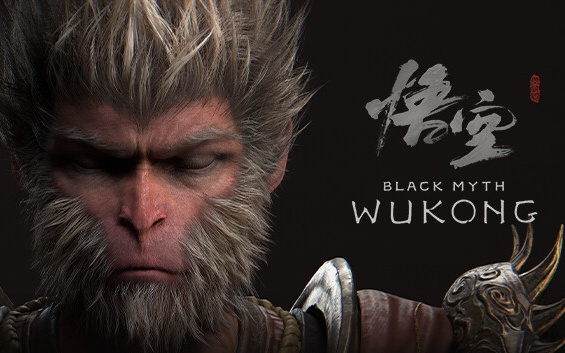The Neo-Calligraphy Master: Heepin Wong and his vision to present Chinese calligraphy to worldwide fans

Chinese calligraphy is the writing of Chinese characters as an art form, combining purely visual art and interpretation of the literary meaning. This type of expression has been considered the supreme art form in China, Japan, Korea, Vietnam, Singapore, Indonesia, Taiwan, and Hongkong, and has been generally held in high esteem across the bigger East Asia region. Its earliest history can be dated back to 3300 years ago, and still widely used in written languages today.

In today’s digital world, calligraphy as a traditional art form seems to be facing an endangered future, as typewriting on computers has replaced handwriting as a new written tool. But calligraphy’s value as an esthetic form has never diminished and modern calligraphers such as Xinping Huang is striving to protect this art form and upgrade its graphic system to match up with the latest fashion trend, while applying calligraphy in more widely-seen social scenarios and commercial activities such as movie, apparel design, packaging design and media dissemination.
Heepin Wong, pseudonym: ‘The wild crane from the yellow hill’, is from Hunan Province. He admires the carefree life of idle clouds and wild crane and thus nicknames himself a free bird. He is the advocate of Modern Chinese calligraphy, combining traditional writing art with commercialization. He has done numerous design collaborations with well-known brands such as Miniso, IBM, theater movies, CCTV, many food, outfit, and beverage businesses.
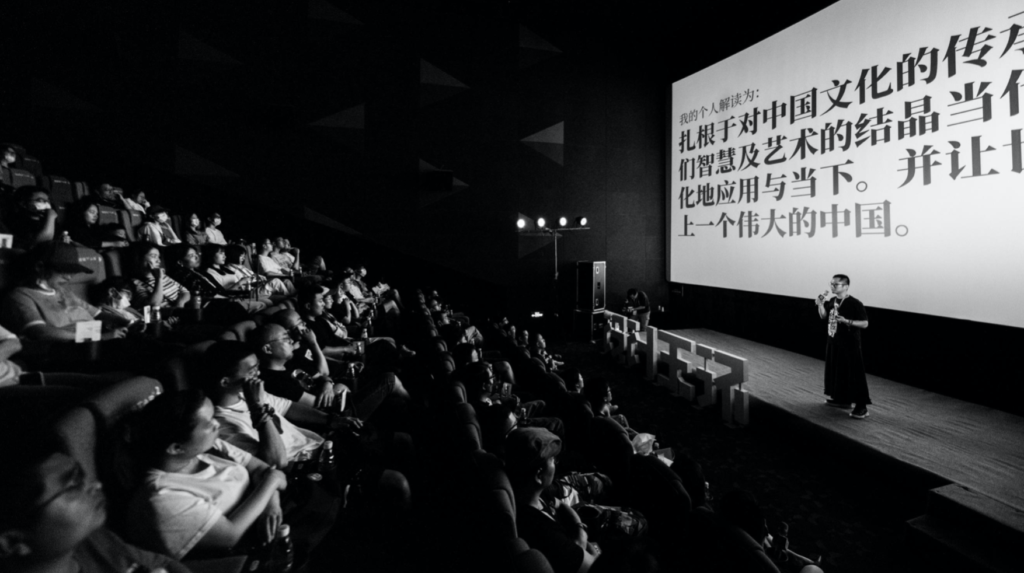
The following interview is conducted by ArtiZen editor Gigi Geng and the founder of Heepin Wong calligraphy studio, Xinping Huang. All content rights reserved.
- How do you define calligraphy?
I used to think that Calligraphy was just to write characters well, and then I found that writing well may not necessarily be the core meaning of calligraphy. Writing character itself is to convey messages, but calligraphy is an art, an art genre that transmits emotions, feelings, thoughts, a spiritual resonance that Chinese express themselves through characters.
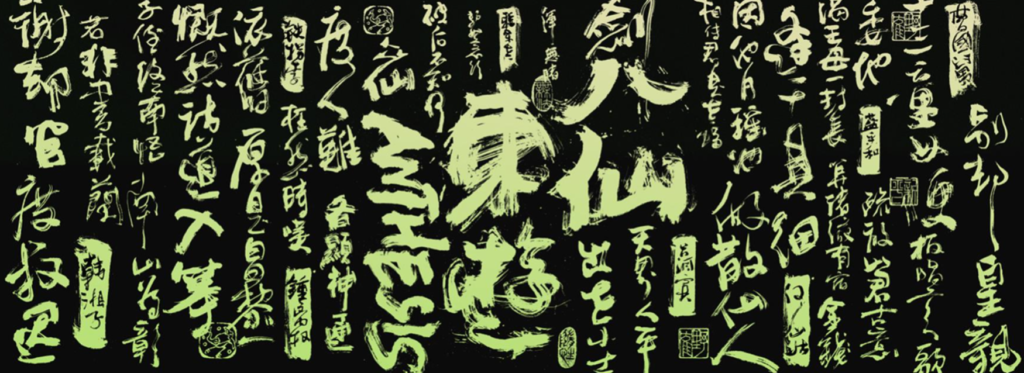
2. What’s commercial calligraphy, how did you start off on this path?
My vision is to bring calligraphy to everyone worldwide, only the mass audience has full access to it can be counted as the promotion and development of calligraphy. And the process of commercialization meets our goal of maximizing calligraphy’s influence, and I spent the past eight years exploring the possibilities of combining the calligraphy legacy with modern commercial design.
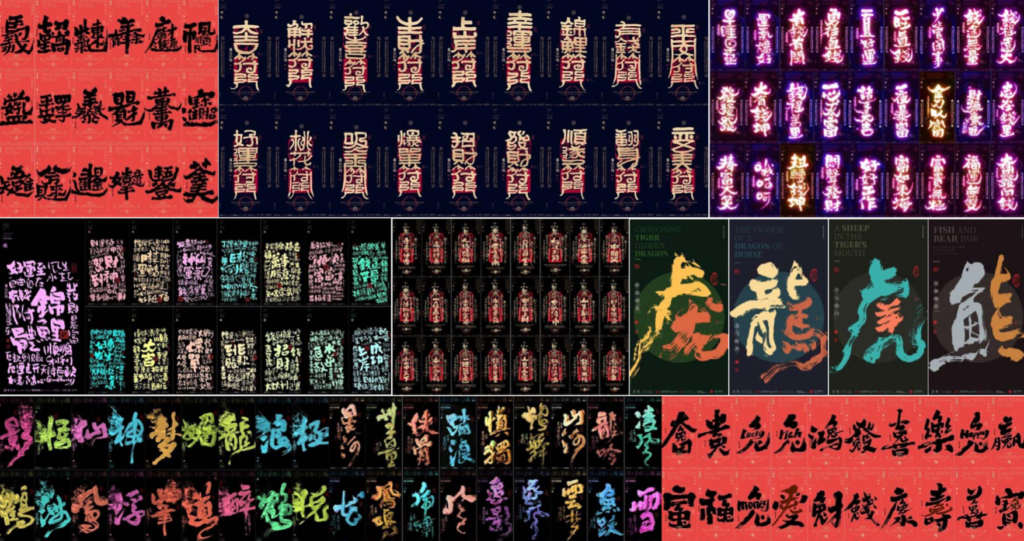
What’s a commercial calligraphy system?
Commercial calligraphy is a new genre. I created this genre in 2016, it’s not simply about monetization. Three keywords to define commercial calligraphy:
1. Traditional calligraphy
2. Commercial measures: increase application in modern scenarios; basic graphic design becomes a standardized process
3. Commercial system logic: the final goal is to obtain commercial-enabled calligraphy, which means using calligraphy on movie posters and consumer products and creating digital handwriting tags.
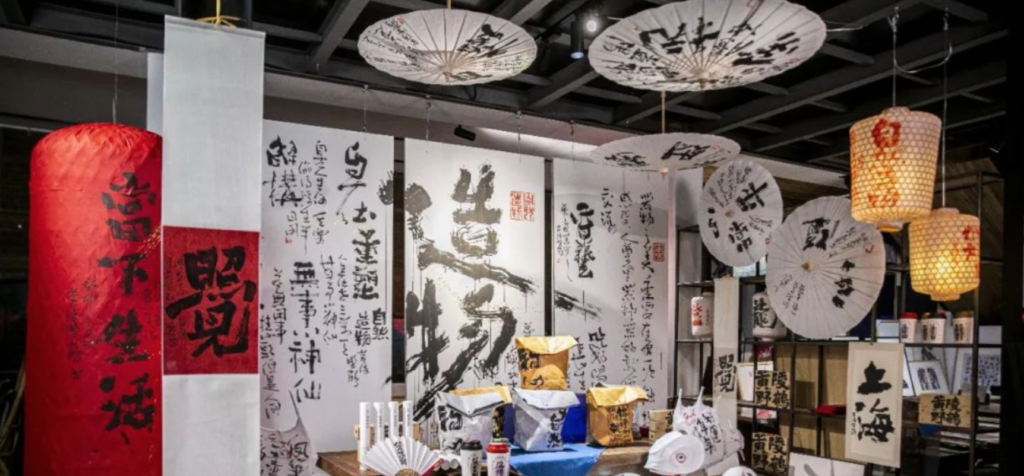
The bar for creating commercial calligraphy is high, the artist has to be excellent in both traditional calligraphy and modern graphic design, and it requires a profound understanding of ancient Chinese culture as well as modern fashion trends.
In terms of marketing commercial calligraphy, we have published our works on social media and updated on a regular basis, we gained 30,000 subscribers every month. Exposing our stylized work on social media helps increase our artwork values because when talking about partnering with consumer brands and IPs, a widely accepted artwork that has been proven on the market has more add-on value than completely new artwork and strange art styles.
3. Which business areas have you been applying calligraphy design in?
From calligraphy databases and movie posters to packaging design and product development, we have done tons of things to explore calligraphy art regardless of character presentation, color and design, these elements have to be aligned with current trends, or even transcend the moment.
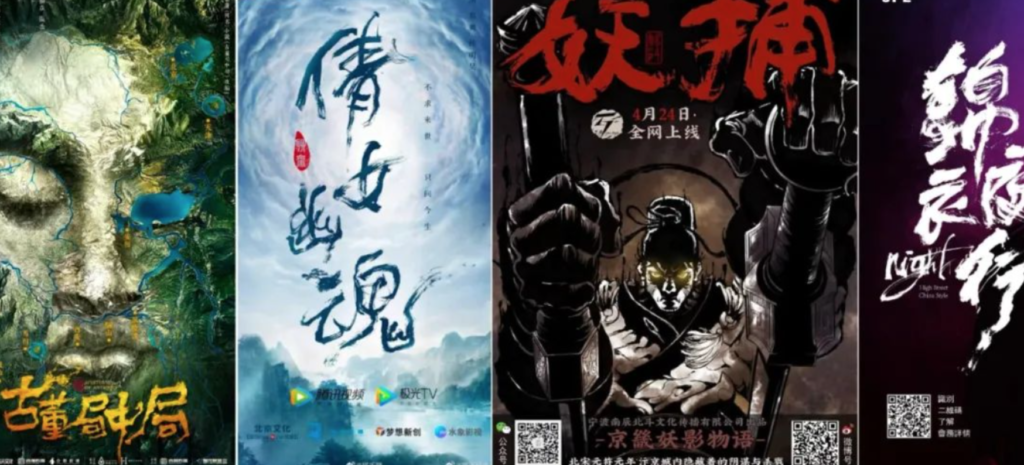
(Movie Titles)

(Clothes & Outfits)

(Tea Brand)

(Food Packages)
4. “Let the world be fascinated by Chinese calligraphy”
We brought about this mission in 2019, hoping to pass more positive energy when people’s expectation grows for us. Many Westerners and also Chinese thought that making calligraphy commercialized is actually copying from Japanese calligraphy. No, absolutely not! Japanese calligraphy derives from Chinese calligraphy and has developed many art forms, but it lacks cultural latitude, which was deeply embedded in Chinese calligraphy’s charisma and charms, this is also the inherent cultural advantage. So when we say” Let the world fall in love with Chinese Calligraphy”, we just have to showcase our genetic strength in a better way, and establish our uniqueness, it’s also our mission.

5. We know you also serve as the nominal Board Director of the Chinese Cultural Fashion Business Alliance, why did you form this alliance, and what’s the Chinese style in your definition?
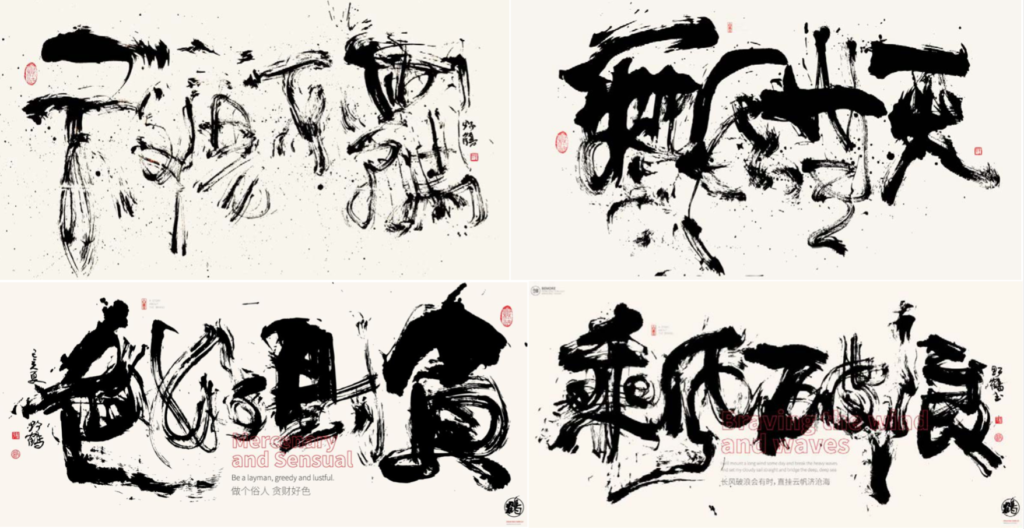
Our business alliance gathers a cohort of companies, and brands that are related to Chinese fashion. Our goal is to present a refreshing, new, trendy China to the world. In my heart, Chinese fashions should span across a wide scope of areas, be more diverse in trends, as trends among younglings and seniles are disparate, and we can’t define trendy is just for the young generation, but Chinese fashion should always implement the traditional culture, twist in the modern way, and apply it in a more fun, interesting and related scenario for the mass audience to accept.
6. What brands have you partnered with? What’s the collaboration model like?
We have partnered with over 100 brands in Asia, with business scope spanning from tech companies, city tourism, food & beverages, apparel, automobiles, digital exhibitions, New Year culture festivals to movies and all kinds of subway station interial advertising campaigns.
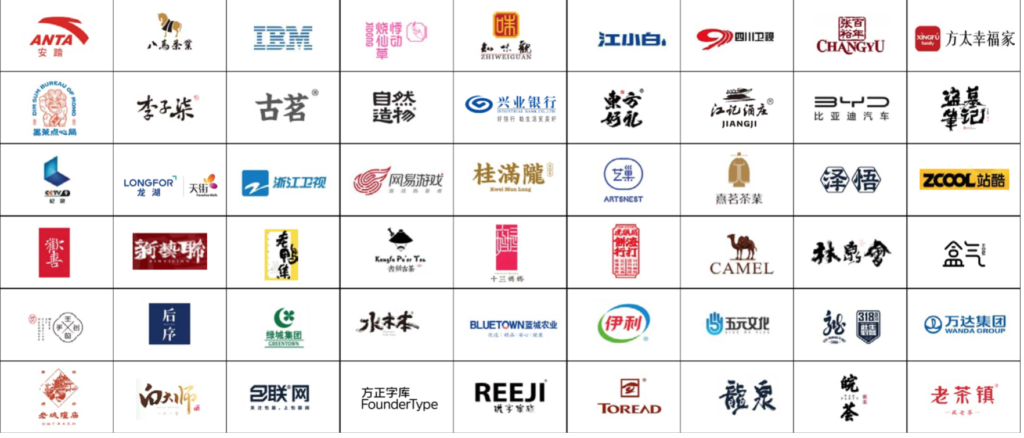
IBM Cloud Creative Calligraphy Design
IBM Hybrid Cloud is a set of cloud computing services for businesses offered by the information technology company IBM. It enables enterprises to work across public, private, and traditional environments.

Contracted with Ogilvy & Mather, the multi-national advertising firm, we worked on creating a set of customized calligraphy characters for their advertising campaigns. The concept of IBM hybrid cloud is to provide users with mixed data storage of private and public cloud, so we align this concept with combining 2-3 different character styles in one word and make it bilingual and interpretable.
7. How do you customize design styles to appeal to different audience demographics?
We choose different color themes, graphic styles, and customized character modifications for different products and marketing purposes.
For example, our 2024 Dragon Year Blessing posters feature a bilingual character design, it’s also a critical part of international creative works.
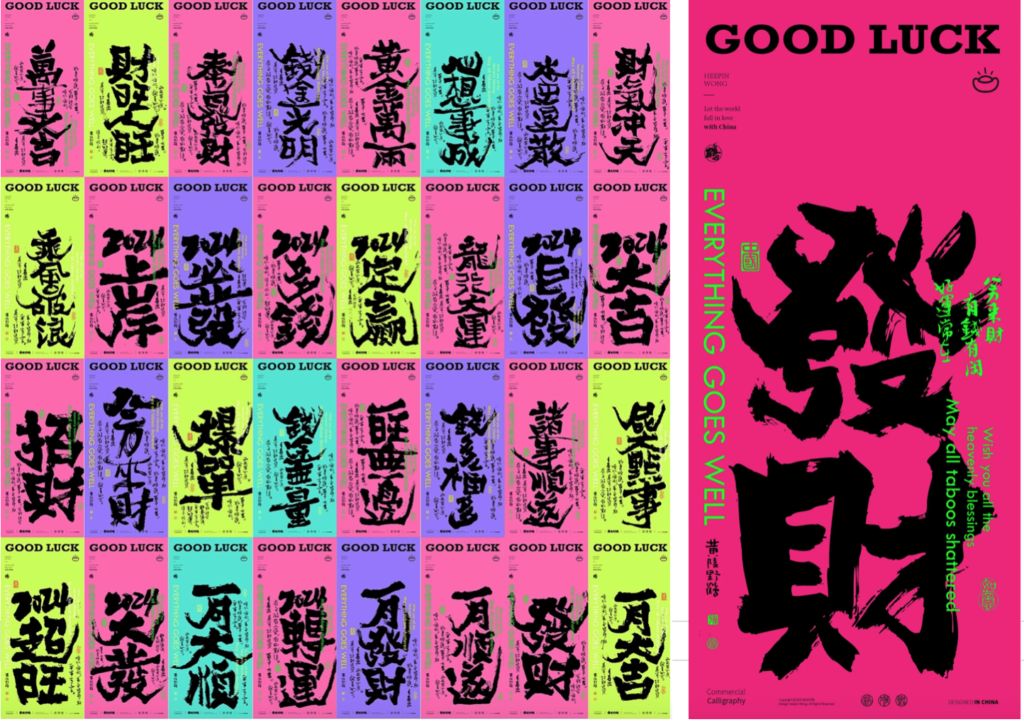
Black Text color attracts male audience;
Hulu shapes and pinky cartoon color appeal to the female demographic;
Neutral-gender color: white and red couplets.
In collaboration with Miniso, the young generation’s popular daily life products and souvenir brand, we adopted a strong color shade to cater to the aesthetic taste of the international audience.
8. IP license and character database authorization
We have built a character database for our clients, a calligraphy vault storing over 10,000 pieces of character designs. There are two collaborative models we usually use with brands:
- Customized Calligraphy design: we design calligraphy work based on brand tones and set concept
- IP licensing: we license our single design work or multiple sets of works to brands
- Long-term brand partnership: We provide customized design services for brands on an annual basis

We are looking for partners worldwide, and through commercial partnerships with a variety of businesses, we hope to introduce Chinese calligraphy to more audiences across the world.
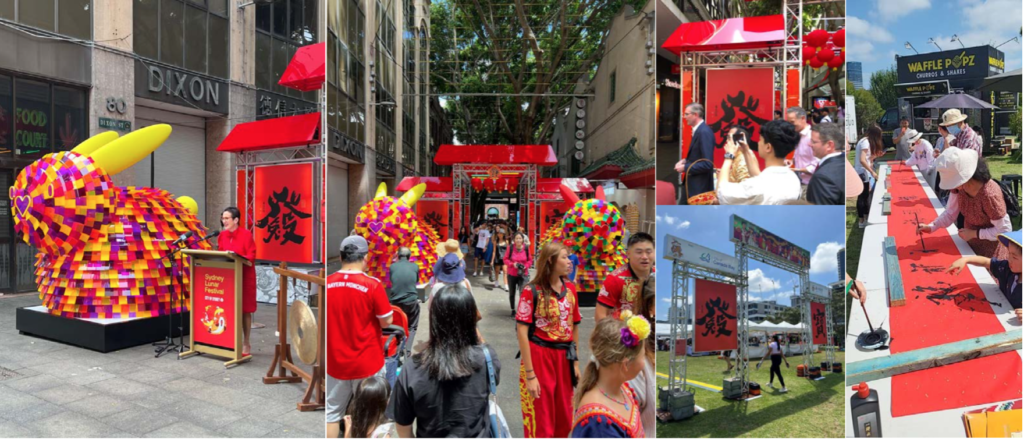
ArtiZen Media is authorized to use Heepin Wong’s calligraphy work for PR and promotion purposes, if you want to repost this article, please contact ArtiZen for authorization.
ArtiZen Media is a publishing partner with Heepin Wong’s calligraphy studio, brands may reach out to ArtiZen for collaboration details.



